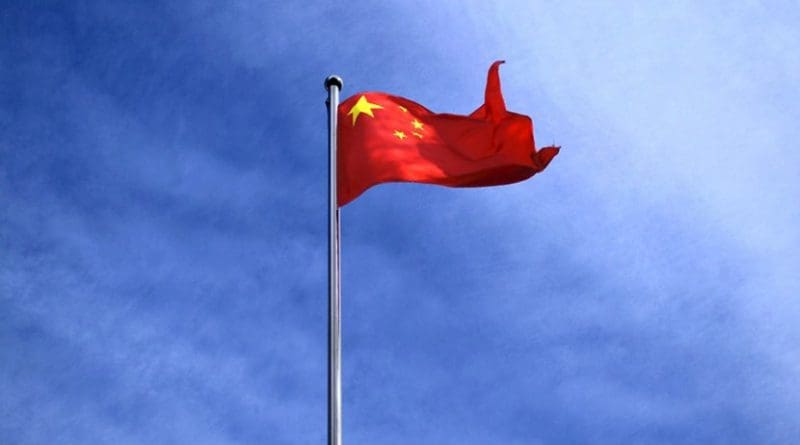How The CCP Is Stalling China’s Legal System – Analysis
By Meng Ye*
Amid the global ‘democratic recession’ and new trend of ‘autocratic legalism’, Xi Jinping’s China is a prime example of how strengthening the law and legal institutions can occur not merely in conjunction with deepened authoritarianism, but in service of it.
The notorious removal of Xi’s term limit came in the form of a constitutional amendment, along with the formal enshrinement of the Chinese Communist Party’s (CCP) leadership. Some interpret this as adding weight to the constitution — and legality in general — within Chinese governance.
The Supreme People’s Court continues to play a vital role in the unification of law interpretation. Local courts are eager to show their innovative applications of artificial intelligence (AI) in reducing the arbitrariness of rulings. They are supposedly less prone to ‘illegitimate’ interventions under increasingly systematised and ‘legitimate’ political control by the Party.
Barriers to administrative litigation cases have allegedly been alleviated by the new case registration system introduced in 2015, while structural reforms to local courts have further curtailed local government influence over the judiciary. Some local courts have even been able to constrain government decisions on land disputes through protest-driven litigation.
None of these cases occurred to the detriment of the Communist Party’s authority over the judiciary. They have instead appeared during a period in which the Party’s ideological and political control over virtually all state institutions has become ever more stringent.
With an increasingly professionalised judiciary — relatively autonomous in its decision-making yet subordinate to the regime — capable of handling vast disputes, it is as if Xi’s China is demonstrating to fellow autocrats how it is ‘properly’ done. But are we truly seeing a real-world reconciliation of deepened authoritarianism with some form of ‘rule of law’?
A closer look reveals a much more nuanced picture. While the sheer volume of administrative cases increased by over 50 per cent upon the introduction of the new system in 2015, the growth rate was not unreasonably high considering the total number of all case types increased by over 40 per cent in the same period. After 2015, the growth rate for administrative cases dropped down to 13.2 per cent, while that of all cases ..
The new system does not seem to have increased public access to administrative litigation against government behaviours in any meaningful way — especially considering the strong trend of rising cases. The proportion of first-instance administrative litigation among all types of cases ruled by local courts across the country barely rose from 9.49 per cent in 2014 to 9.97 per cent in 2019. The percentage of cases in China won by plaintiffs increased marginally but remained at the exceedingly low rate of around 13 per cent in 2015.
Administrative litigation is an important indicator of the extent to which courts can counteract the political influence of local party and state actors. ‘Local protectionism’ has been a preeminent feature of the Chinese judiciary as a structural loophole enabling corruption and resistance to central guidelines.
Post-2013 judicial reforms have targeted local party-state power over the judiciary by centralising court personnel and budgetary management to the provincial level. But implementation remains substantially incomplete. Less developed provinces have barely started implementing budgetary centralisation, while local governments in more developed regions remain responsible for significant parts of monetary budgets and material equipment.
The establishment of the new anti-corruption mechanism has systematically weakened the judiciary’s already-inferior status vis-a-vis party committees without bringing about any significant vertical centralisation. An initial analysis cautions that the use of AI in Chinese courts might further curb judges’ decision-making discretion and autonomy, rather than facilitate it. It is reasonable to assume that the supremacy of party committees over all other state institutions — a core feature of Chinese authoritarianism — has itself obstructed many of the reform outcomes the CCP desired.
It certainly is true that the CCP has moved further away from the liberal concept of ‘rule of law’ and is striving to construct a legal framework that sustains its ‘neo-totalitarian’ rule. But the efficacy with which it has managed to do so is far from clear, even when measured against objectives like reducing local protectionism and granting courts sufficient autonomy to sustain regime legitimacy.
Questions remain as to how conducive the CCP’s intensifying supremacy is to achieving many of its own policy goals. If China is a testing ground for the extent to which authoritarian regimes can rely on ’legality’ — stripped of the democratic, normative core of the ‘rule of law’ — to help sustain political rule, there may be some hard limits to how far these efforts can go.
*About the author: Meng Ye is a Research Assistant and Junior Lecturer at Chair of Greater China Studies, University of Tübingen.
Source: This article was published by East Asia Forum

